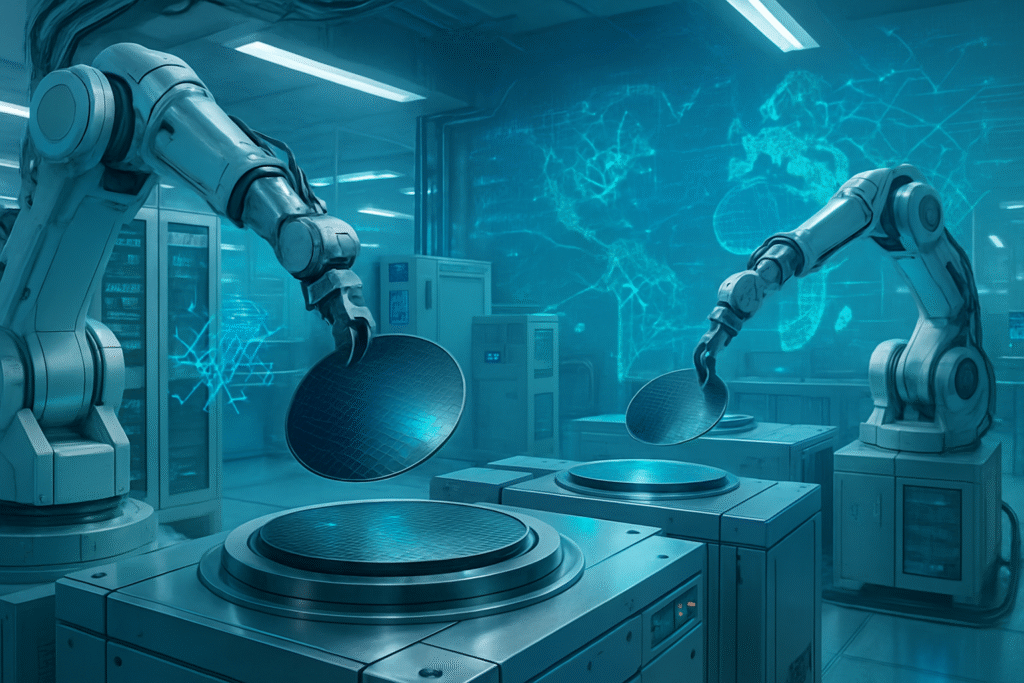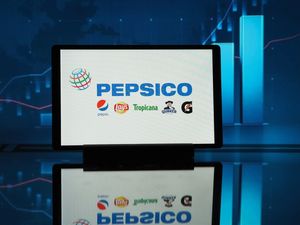
The world is witnessing an unprecedented surge in investment within the semiconductor manufacturing sector, a monumental effort to reshape the global supply chain and meet the insatiable demand for advanced chips. With approximately $1 trillion earmarked for new fabrication plants (fabs) through 2030, and 97 new high-volume fabs expected to be operational between 2023 and 2025, the industry is undergoing a profound transformation. This massive capital injection, driven by geopolitical imperatives, a quest for supply chain resilience, and the explosive growth of Artificial Intelligence (AI), promises to fundamentally alter where and how the world's most critical components are produced.
This global chip renaissance is particularly evident in the United States, where initiatives like the CHIPS and Science Act are catalyzing significant domestic expansion. Major players such as Taiwan Semiconductor Manufacturing Company (TSMC) (NYSE: TSM), Intel (NASDAQ: INTC), and Samsung (KRX: 005930) are committing tens of billions of dollars to construct state-of-the-art facilities, not only in the U.S. but also in Europe and Asia. These investments are not merely about increasing capacity; they represent a strategic pivot towards diversifying manufacturing hubs, fostering innovation in leading-edge process technologies, and securing the foundational elements for the next wave of technological advancement.
A Deep Dive into the Fab Frenzy: Technical Specifications and Industry Reactions
The scale and technical ambition of these new fab projects are staggering. TSMC, for instance, is expanding its U.S. investment to an astonishing $165 billion, encompassing three new advanced fabs, two advanced packaging facilities, and a major R&D center in Phoenix, Arizona. The first of these Arizona fabs, already in production since late 2024, is reportedly supplying Apple (NASDAQ: AAPL) with cutting-edge chips. Beyond the U.S., TSMC is also bolstering its presence in Japan and Europe through strategic joint ventures.
Intel (NASDAQ: INTC) is equally aggressive, pledging over $100 billion in the U.S. across Arizona, New Mexico, Oregon, and Ohio. Its newest Arizona plant, Fab 52, is already utilizing Intel's advanced 18A process technology (a 2-nanometer-class node), demonstrating a commitment to leading-edge manufacturing. In Ohio, two new fabs are slated to begin production by 2025, while its New Mexico facility, Fab 9, opened in January 2024, focuses on advanced packaging. Globally, Intel is investing €17 billion in a new fab in Magdeburg, Germany, and upgrading its Irish plant for EUV lithography. These moves signify a concerted effort by Intel to reclaim its manufacturing leadership and compete directly with TSMC and Samsung at the most advanced nodes.
Samsung Foundry (KRX: 005930) is expanding its Taylor, Texas, fab complex to approximately $44 billion, which includes an initial $17 billion production facility, an additional fab module, an advanced packaging facility, and an R&D center. The first Taylor fab is expected to be completed by the end of October 2025. This facility is designed to produce advanced logic chips for critical applications in mobile, 5G, high-performance computing (HPC), and artificial intelligence. Initial reactions from the AI research community and industry experts are overwhelmingly positive, recognizing these investments as crucial for fueling the next generation of AI hardware, which demands ever-increasing computational power and efficiency. The shift towards 2nm-class nodes and advanced packaging is seen as a necessary evolution to keep pace with AI's exponential growth.
Reshaping the AI Landscape: Competitive Implications and Market Disruption
These massive investments in semiconductor manufacturing facilities will profoundly reshape the competitive landscape for AI companies, tech giants, and startups alike. Companies that stand to benefit most are those at the forefront of AI development, such as NVIDIA (NASDAQ: NVDA), which relies heavily on advanced chips for its GPUs, and major cloud providers like Amazon (NASDAQ: AMZN), Google (NASDAQ: GOOGL), and Microsoft (NASDAQ: MSFT) that power AI workloads. The increased domestic and diversified production capacity will offer greater supply security and potentially reduce lead times for these critical components.
The competitive implications for major AI labs and tech companies are significant. With more advanced fabs coming online, particularly those capable of producing cutting-edge 2nm-class chips and advanced packaging, the race for AI supremacy will intensify. Companies with early access or strong partnerships with these new fabs will gain a strategic advantage in developing and deploying more powerful and efficient AI models. This could disrupt existing products or services that are currently constrained by chip availability or older manufacturing processes, paving the way for a new generation of AI hardware and software innovations.
Furthermore, the focus on leading-edge technologies and advanced packaging will foster an environment ripe for innovation among AI startups. Access to more sophisticated and specialized chips will enable smaller companies to develop niche AI applications that were previously unfeasible due to hardware limitations. This market positioning and strategic advantage will not only benefit the chipmakers themselves but also create a ripple effect throughout the entire AI ecosystem, driving further advancements and accelerating the pace of AI adoption across various industries.
Wider Significance: Broadening the AI Horizon and Addressing Concerns
The monumental investments in semiconductor fabs fit squarely within the broader AI landscape, addressing critical needs for the technology's continued expansion. The sheer demand for computational power required by increasingly complex AI models, from large language models to advanced machine learning algorithms, necessitates a robust and resilient chip manufacturing infrastructure. These new fabs, with their focus on leading-edge logic and advanced memory like High Bandwidth Memory (HBM), are the foundational pillars upon which the next era of AI innovation will be built.
The impacts of these investments extend beyond mere capacity. They represent a strategic geopolitical realignment, aimed at reducing reliance on single points of failure in the global supply chain, particularly in light of recent geopolitical tensions. The CHIPS and Science Act in the U.S. and similar initiatives in Europe and Japan underscore a collective understanding that semiconductor independence is paramount for national security and economic competitiveness. However, potential concerns linger, including the immense capital and operational costs, the increasing demand for raw materials, and persistent talent shortages. Some projects have already faced delays and cost overruns, highlighting the complexities of such large-scale endeavors.
Comparing this to previous AI milestones, the current fab build-out can be seen as analogous to the infrastructure boom that enabled the internet's widespread adoption. Just as robust networking infrastructure was essential for the digital age, a resilient and advanced semiconductor manufacturing base is critical for the AI age. This wave of investment is not just about producing more chips; it's about producing better, more specialized chips that can unlock new frontiers in AI research and application, addressing the "hardware bottleneck" that has, at times, constrained AI's progress.
The Road Ahead: Future Developments and Expert Predictions
The coming years are expected to bring a continuous stream of developments stemming from these significant fab investments. In the near term, we will see more of the announced facilities, such as Samsung's Taylor, Texas, plant and Texas Instruments' (NASDAQ: TXN) Sherman facility, come online and ramp up production. This will lead to a gradual easing of supply chain pressures and potentially more competitive pricing for advanced chips. Long-term, experts predict a further decentralization of leading-edge semiconductor manufacturing, with the U.S., Europe, and Japan gaining significant shares of wafer fabrication capacity by 2032.
Potential applications and use cases on the horizon are vast. With more powerful and efficient chips, we can expect breakthroughs in areas such as real-time AI processing at the edge, more sophisticated autonomous systems, advanced medical diagnostics powered by AI, and even more immersive virtual and augmented reality experiences. The increased availability of High Bandwidth Memory (HBM), for example, will be crucial for training and deploying even larger and more complex AI models.
However, challenges remain. The industry will need to address the increasing demand for skilled labor, particularly engineers and technicians capable of operating and maintaining these highly complex facilities. Furthermore, the environmental impact of increased manufacturing, particularly in terms of energy consumption and waste, will require innovative solutions. Experts predict a continued focus on sustainable manufacturing practices and the development of even more energy-efficient chip architectures. The next big leaps in AI will undoubtedly be intertwined with the advancements made in these new fabs.
A New Era of Chipmaking: Key Takeaways and Long-Term Impact
The global surge in semiconductor manufacturing investments marks a pivotal moment in technological history, signaling a new era of chipmaking defined by resilience, innovation, and strategic diversification. The key takeaway is clear: the world is collectively investing trillions to ensure a robust and geographically dispersed supply of advanced semiconductors, recognizing their indispensable role in powering the AI revolution and virtually every other modern technology.
This development's significance in AI history cannot be overstated. It represents a fundamental strengthening of the hardware foundation upon which all future AI advancements will be built. Without these cutting-edge fabs and the chips they produce, the ambitious goals of AI research and deployment would remain largely theoretical. The long-term impact will be a more secure, efficient, and innovative global technology ecosystem, less susceptible to localized disruptions and better equipped to handle the exponential demands of emerging technologies.
In the coming weeks and months, we should watch for further announcements regarding production milestones from these new fabs, updates on government incentives and their effectiveness, and any shifts in the competitive dynamics between the major chipmakers. The successful execution of these massive projects will not only determine the future of AI but also shape global economic and geopolitical landscapes for decades to come.
This content is intended for informational purposes only and represents analysis of current AI developments.
TokenRing AI delivers enterprise-grade solutions for multi-agent AI workflow orchestration, AI-powered development tools, and seamless remote collaboration platforms.
For more information, visit https://www.tokenring.ai/.





